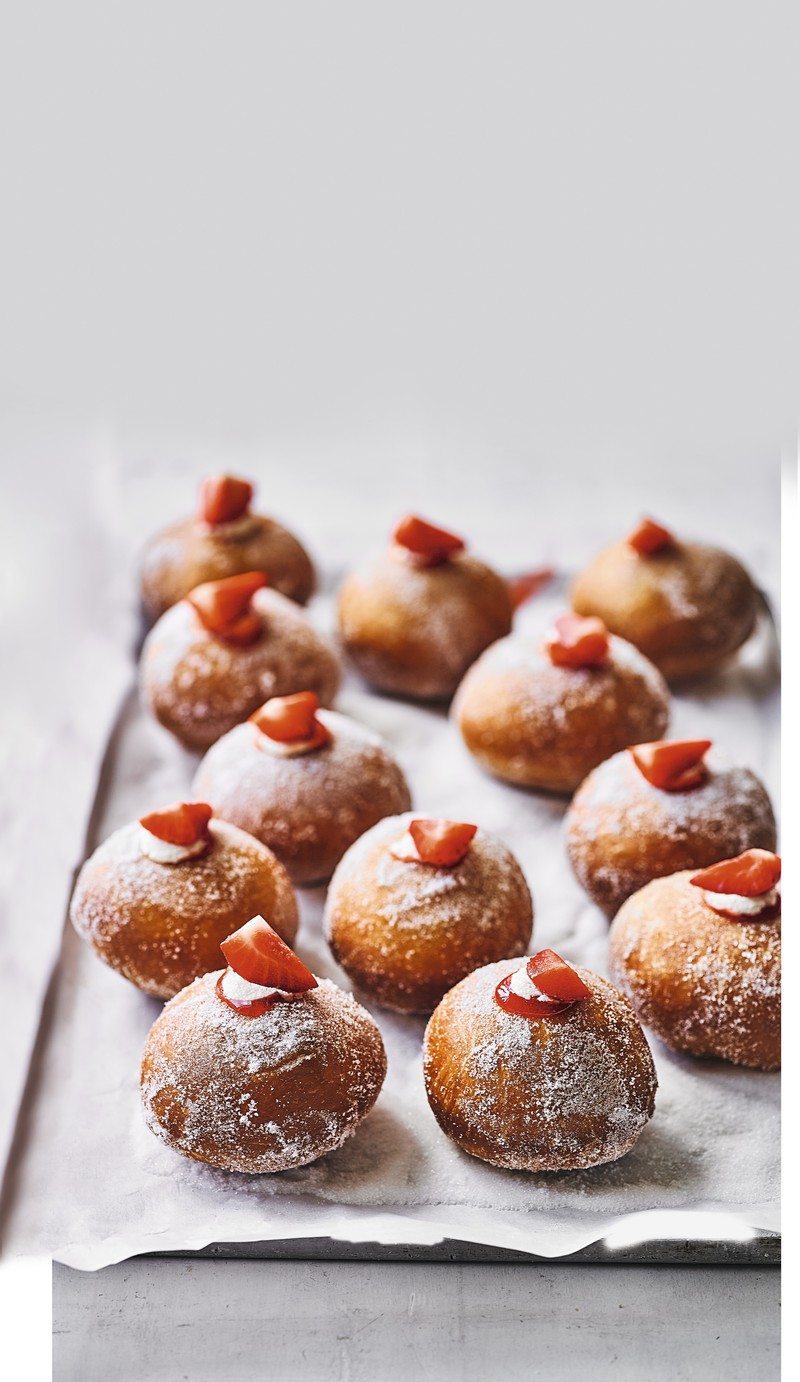
Gently heat the butter and the milk in a pan, until the butter has melted and the milk is warmed.
Put the flour into a large mixing bowl, add the salt to one side of the bowl and the yeast to the other. The salt can kill yeast if in direct contact, which will stop your dough rising. Tip the sugar into the bowl and make a well in the middle of the flour mixture.
Pour the warm milk mixture with the beaten eggs into the flour and stir the mixture together using a round-ended knife, until all the flour is incorporated and forms a soft, sticky dough.
Knead the dough on a lightly oiled work surface for 5–10 minutes or until it forms a smooth ball. Add a little extra flour if it’s too sticky. It should spring back if you poke it with your finger. Place in a lightly oiled bowl, cover with clingfilm and leave to rise until doubled in size. (about an hour)
On a work surface fold the dough in on itself a few times to knock out any large air bubbles. Divide into 12 even pieces and shape into small balls. Arrange on an oiled tray loosely covered with clingfilm and leave for 30-45 minutes or until noticeably larger. Meanwhile, line a baking tray with kitchen paper and pour the coating sugar into a second tray.
In a large heavy-based saucepan, heat the oil to 160°C (see my tip above). Deep-fry the doughnuts in batches, cooking for 1½–2 minutes on each side until golden brown, remove with a slotted spoon onto the kitchen paper tray to absorb any excess oil.
When the doughnuts are cool enough to touch, roll them generously in the caster sugar to coat. With a skewer, make a small hole in the side of each and move it about to form a cavity.
Sieve or whizz the jam in a food processor until it is really smooth. Spoon into a piping bag and fill each doughnut with jam, then repeat the process with the whipped cream until every doughnut is filled. Place a piece of strawberry over the hole of each doughnut and then enjoy immediately.
Martha’s Tip
Getting the oil temperature right (the bread test):
If the oil is too hot, the doughnuts will brown too quickly on the outside and still be raw in the middle. Too cold and the dough will be greasy and oily. A sugar thermometer is the best tool, but if you don’t have a thermometer, try dropping a small piece of bread into the oil. It should sizzle when it comes into contact with the oil, but take a few minutes to brown.
Recipe and image courtesy of Waitrose & Partners and Martha Collison, Martha’s most recent book is CRAVE, published by HarperCollins. You can find her online at BakingMartha.co.uk and on Instagram @marthacollison.
DISCLAIMER: We endeavour to always credit the correct original source of every image we use. If you think a credit may be incorrect, please contact us at info@sheerluxe.com.

